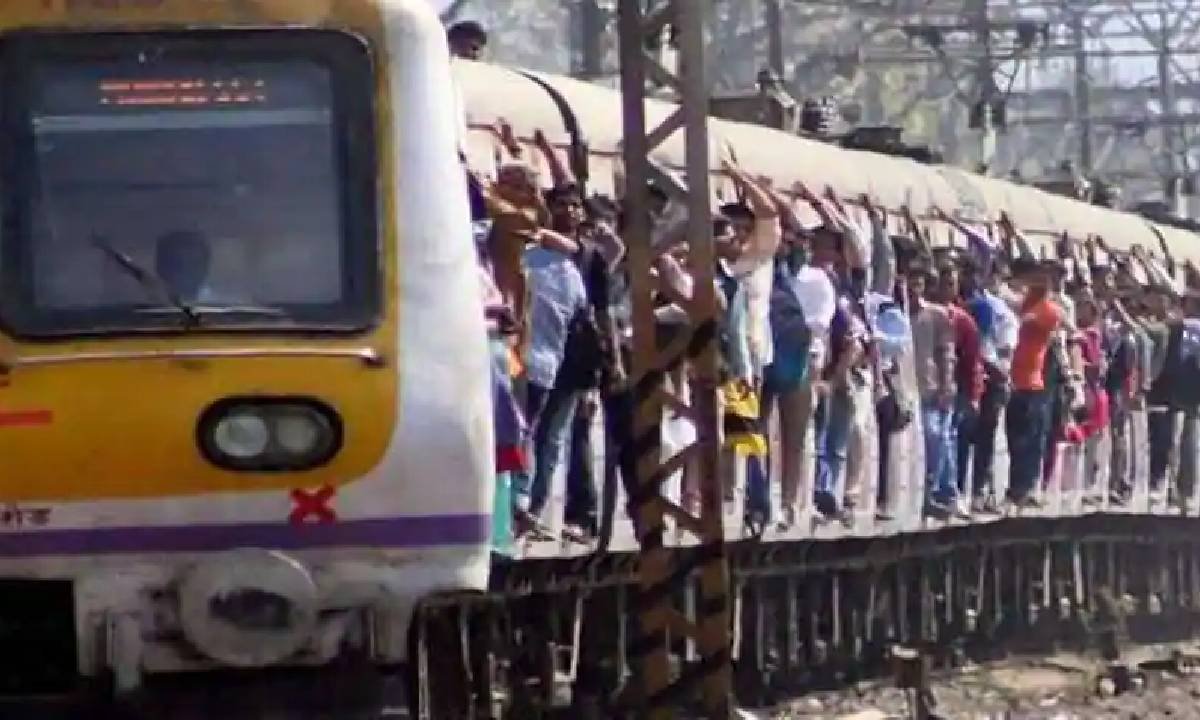
Amidst crowded trains in Mumbai, a video showing a man falling off from a Western Railway train has gone viral. In the video that surfaced on social media, we can see a man losing balance from the footboard of the local train and falling on the railway platform. The video footage shows the passenger managing to save himself from potential mishap; he stands up after falling on the platform. But our conscience must also hurt for people that die daily falling over from local trains. Our conscience must be hurt knowing that a BEST bus that is supposed to carry 51 people is carrying 120 and a local train that is supposed to carry 1,174 passengers is carrying 6,000. It’s not “bad luck” when there’s a stampede or a bridge collapse and people die, in fact it’s a miracle that it doesn’t happen more often.
We need to save the people who die because this city’s infrastructure is crumbling around them. And it would be disastrous if we left their fate to chance, only because we failed to see the bigger picture. Daily crowds of city travel using local trains in Mumbai and suburban trains are the lifeline of this metropolis. Mumbai is designed for just two modes of working – on or off. The city has the lowest road to total area ratio among the metros. It also has the highest population density.
7 million commuters use the Mumbai local train network every day. The Sealink was built at the cost of 16 billion Rupees (USD 250 million) and carries mostly cats and taxis. If even a part of this money had been spent on improving the railway system, majorities of Mumbai cities commuters’ world would have been traveling safer today. As a nation we get our priorities horribly wrong. Yet we don’t mind, if someone is killed or seriously injured in a rush-hour.
Mumbai local is the heart of Mumbaikar, it carries thousands of people day in day out. Most of the people spend their precious time here. There are a number of problems involved but not much can be done because we have already utilized all our resources to the maximum level so a convenient option would be to develop alternate routes and modes of transportation and get innovative techniques rather than trying to burden the already burdened local system. A better transportation system is one which caters the needs of all the consumers in time and with minimum level of comfort. The frequency of Mumbai local trains is as high as 3 minutes in western and central line during the peak hours. The frequency cannot be increased anymore because that will increase the risk of incurring an accident. So, the trains go jam-packed. Nothing more in terms of frequency can be done. Still the local trains of Mumbai need a lot of makeovers, but scope is not much wide. The number of coaches can be increased but most of the stations (platform length) need to be increased. The Harbour line did this very well and now has longer trains than other routes. Every year more than 3500 people die of railway accidents out of which 1/3rd accident takes place in Mumbai alone. Along with the railways (local) other dimensions need to be strengthened. GPS enabled train network systems can be very helpful in tracking the trains in real time and head-on collisions between two trains (any train viz express, local) can be avoided. Women should be given a priority, for example the number of toilets in the stations of local trains are very less.
Men can find a wall but for women they have to walk a lot to find a toilet that is too functional with basic requirements like water and cleanliness. To decongest the local trains, it is very important to develop alternate routes, lots of steps are taken in this direction but the pace of work is too slow like monorail, metro, development of routes which have more number of options for example with the introduction of Versova-Ghatkopar metro the situation of roads has functional to normal level also people have more options of traveling thereby saving time. Also, there should be more inclination by common citizenry to use public transport. The rise in population is a very big problem, if alternate routes, habitation centers, and working centers are not created in the fringe areas of Mumbai. Any prevalent transportation system will be insufficient, dysfunctional and overcrowded. Dirty trains, tobacco stains on platforms cost WR Rs 3.5 crore every year. It’s a simple thing but if stopped can bring about enormous difference in terms of cleanliness. Upgrading Mumbai’s locals is not an easy task. As you all know that Locals are the lifeline of Mumbaikars. If the locals come to a stop, the whole Mumbai will come to a standstill. Mumbai’s suburban system is very outdated and specially the Harbour line. The ones which are good are Western and Central lines. For upgrading Mumbai’s suburban system, they will have to halt it and stopping Mumbai’s local train would mean removing a heart from a person’s body. But this does not seem to be right. The main reason behind government spending hugely on Metro Trains is because of better connectivity as they travel across various towns where local trains cannot reach.
So much can be done and so much is needed of an hour, Mumbai local has limited space and maximum challenges, but still western railway has come up with an announcement to make over south Mumbai local train stations. Let’s see with time ahead launch of metro station and trains Mumbaikar might get solace in commuting.

